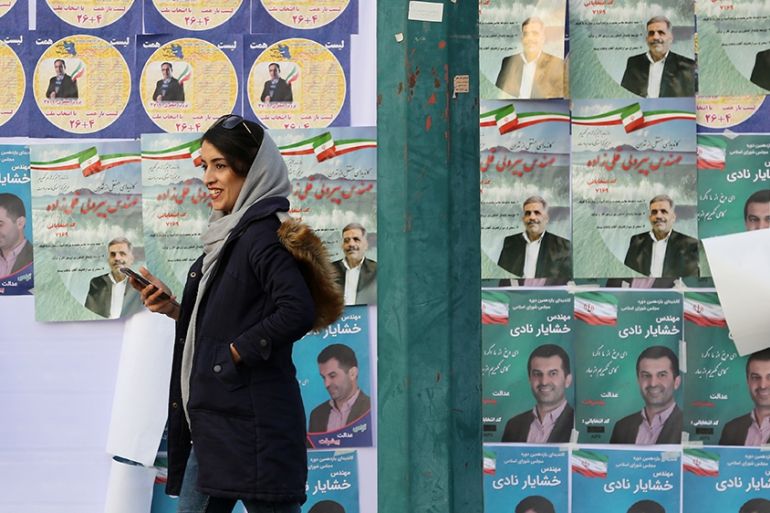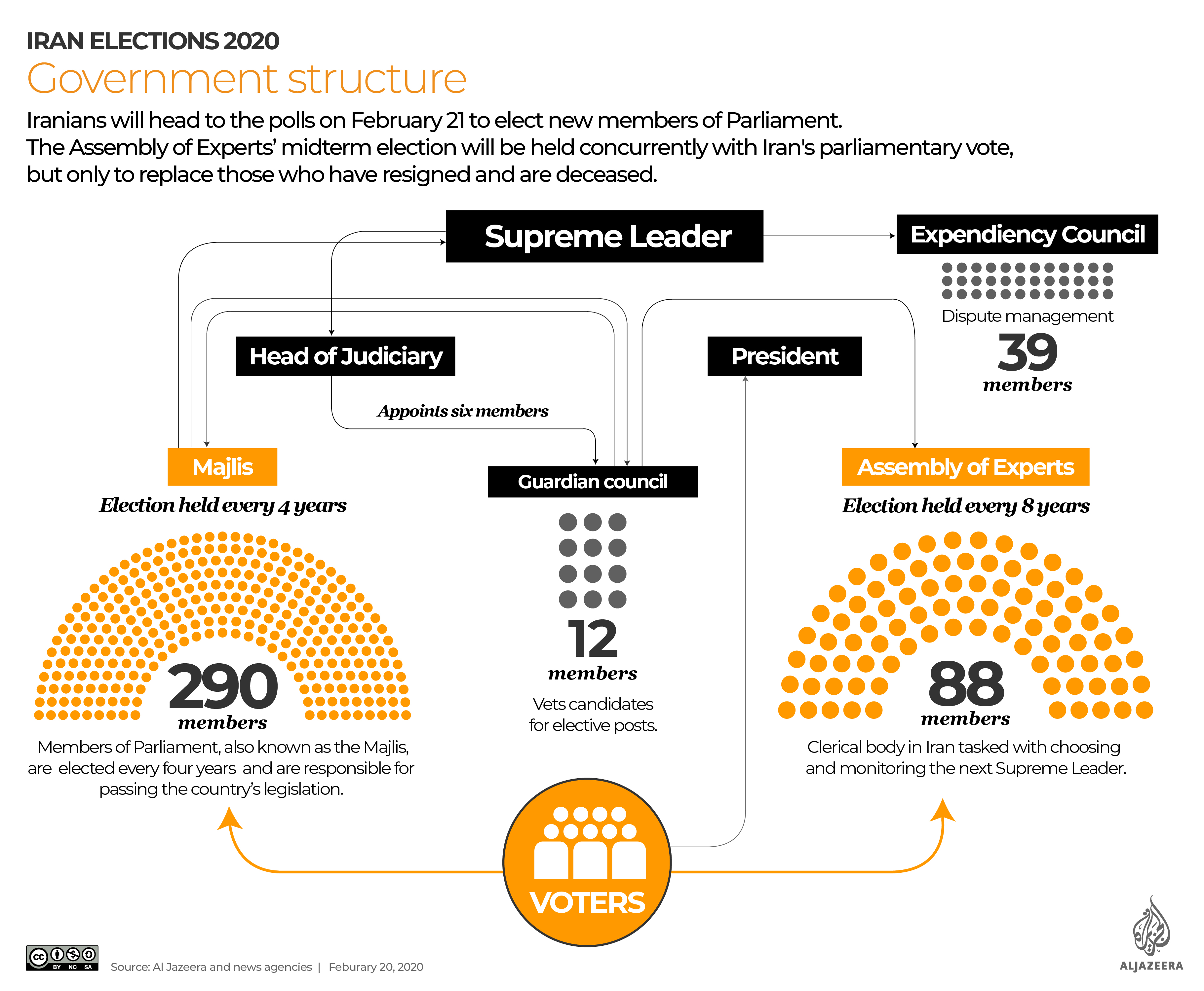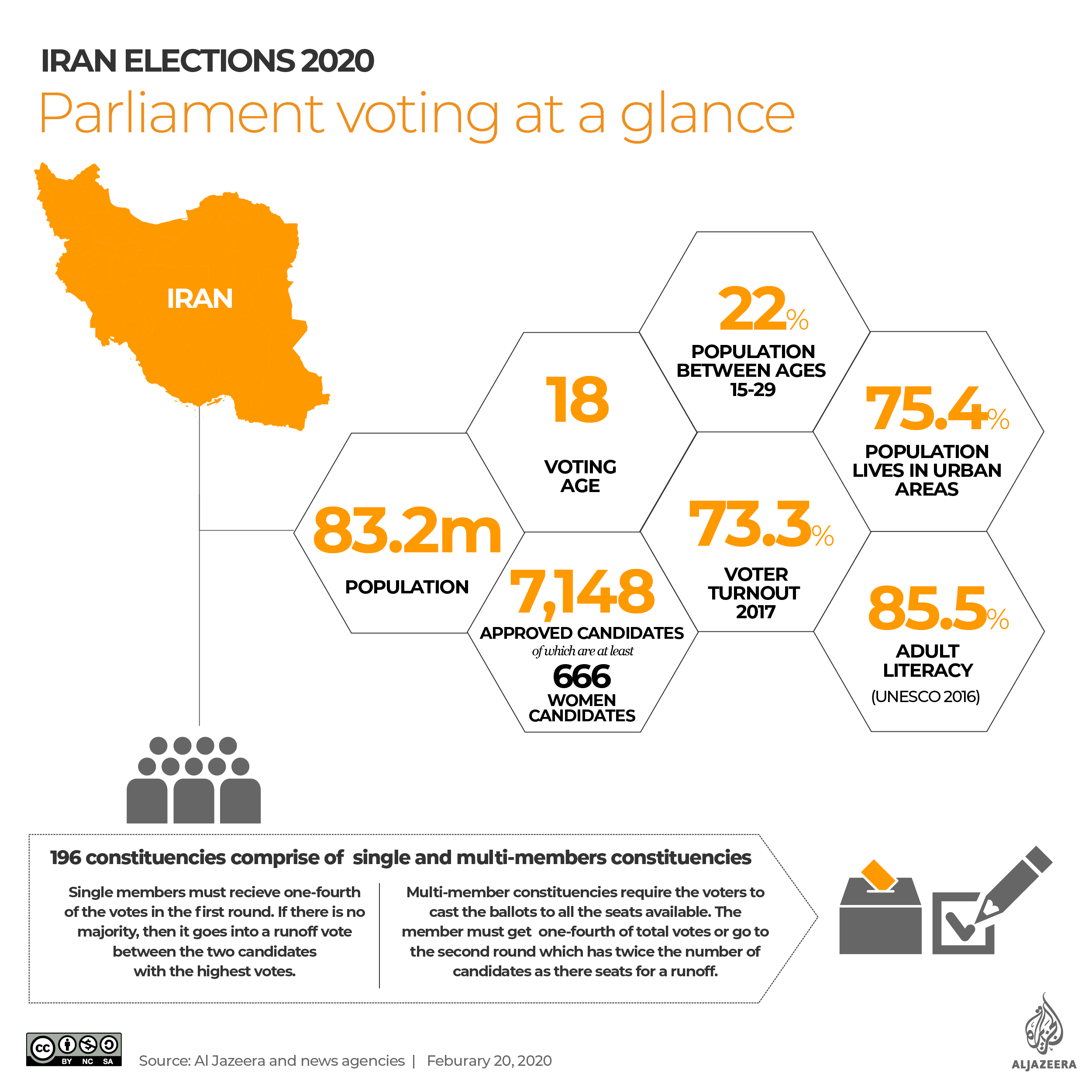Iran: How elections work
Almost 58 million eligible voters will vote in a parliamentary election against a backdrop of a severe economic crisis.

Iranians will head to the polls on February 21 to elect new members of parliament.
It is the 11th parliamentary vote since the establishment of the Islamic Republic in 1979 and the 36th since the Iranian Constitutional Revolution.
Keep reading
list of 4 itemsCroatians vote in election pitting the PM against the country’s president
Solomon Islanders vote in election that could shape ties with China
Analysis: Ruling party errors give Turkey’s opposition hope for future
Elected members will serve for a term of four years.
The parliament, known as the Majlis, has 290 members.
They are elected every four years and are responsible for passing the country’s legislation.
Candidates are vetted by the powerful Guardian Council, which acts the country’s constitutional watchdog.
Of those registered to run, 7,296 were disqualified, including many critics and reformist candidates.
Of the 7,148 candidates approved, 666 are women.
In 2016, there were more than 250 registered political parties, but allegiances shift during and after elections.

The elections are expected to test the popularity of the reformist bloc, associated with President Hassan Rouhani, which promised to get the nuclear sanctions lifted and to improve the economy.
When Rouhani ran for re-election in May 2017, he won 57 percent of the vote. At that time, US President Donald Trump had already threatened to withdraw from the 2015 nuclear deal.

ECONOMY
With an inflation rate of 33.5 percent last year, according to UN estimates, many are looking for the government to solve the country’s economic problems.
Iran has the largest reserves of natural gas in the world, at more than 1.2 trillion cubic feet. The country also has 157 billion barrels of oil reserves, the fourth largest in the world. It hopes to dramatically improve oil production to eventually reach 3.5 million barrels per day (bpd), which is what it produced before economic sanctions were imposed in 2011 and 2012.
FOREIGN AFFAIRS
After the breakdown of the 2015 Iran nuclear deal in 2018 and the US reimposition of economic sanctions, Iran’s diplomatic and economic ties with the West have deteriorated.
The assassination of Iranian General Qassem Soleimani in an air strike, ordered by President Trump near Baghdad airport on January 3, brought Iran to the brink of a military confrontation with the United States.
The killing of Soleimani rallied the country against the US. But only days after that anger was directed against the government following the shooting down of a civilian plane that killed 176 people on board, many of them Iranians and dual nationals.
Iran continues to engage in a proxy war with regional rival Saudi Arabia in places such as Syria, Iraq and Yemen, and relations between the two countries remain tense.
HUMAN RIGHTS
Freedom of expression also remains a major issue in the country, with the arrest of journalists, artists and other activists.
The most prominent figure in the Green Movement, Mir-Hossein Mousavi, who was a 2009 presidential candidate, remains under house arrest.
In November and December 2019, protests over fuel price increase erupted across the country, leaving several hundred people dead.